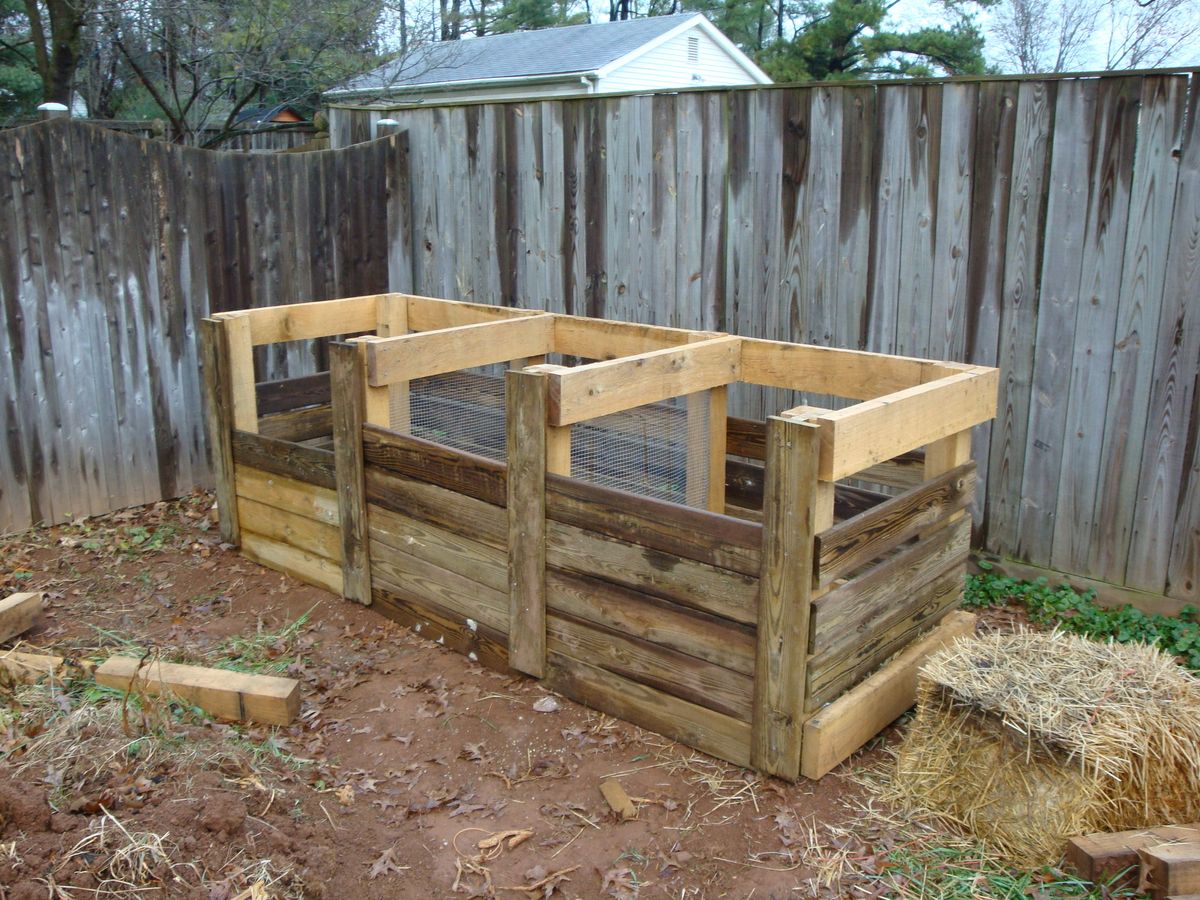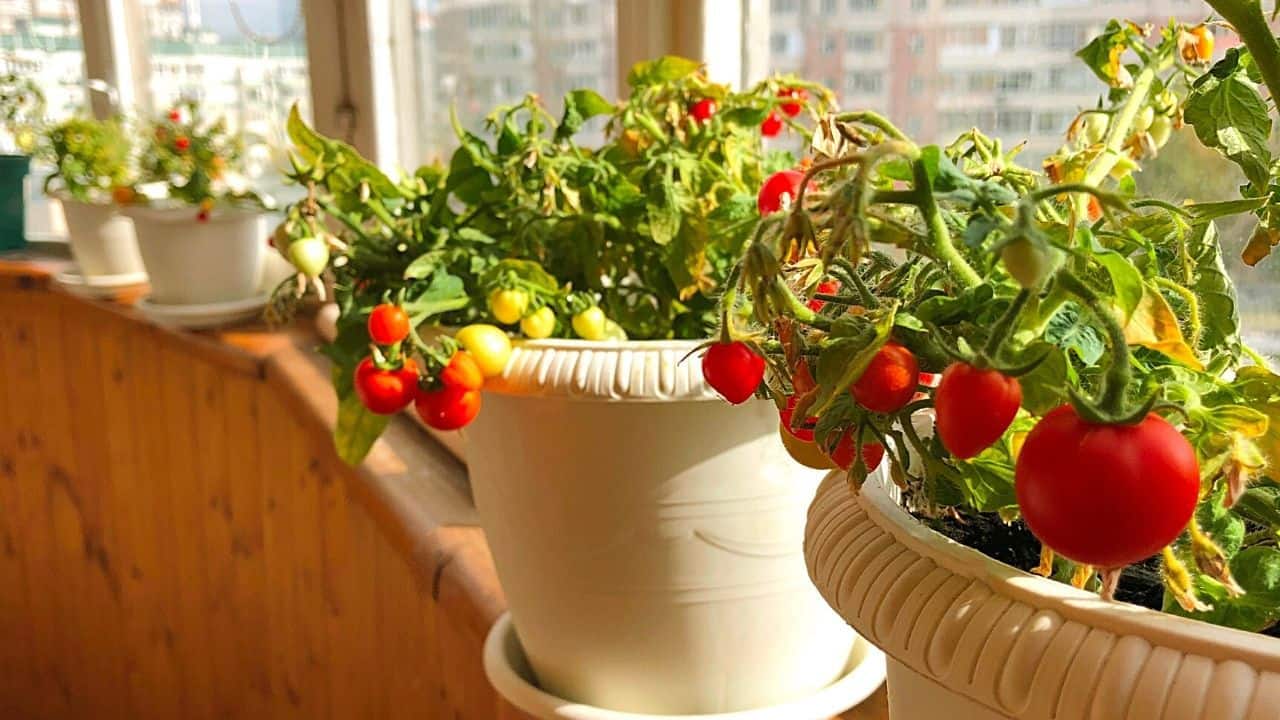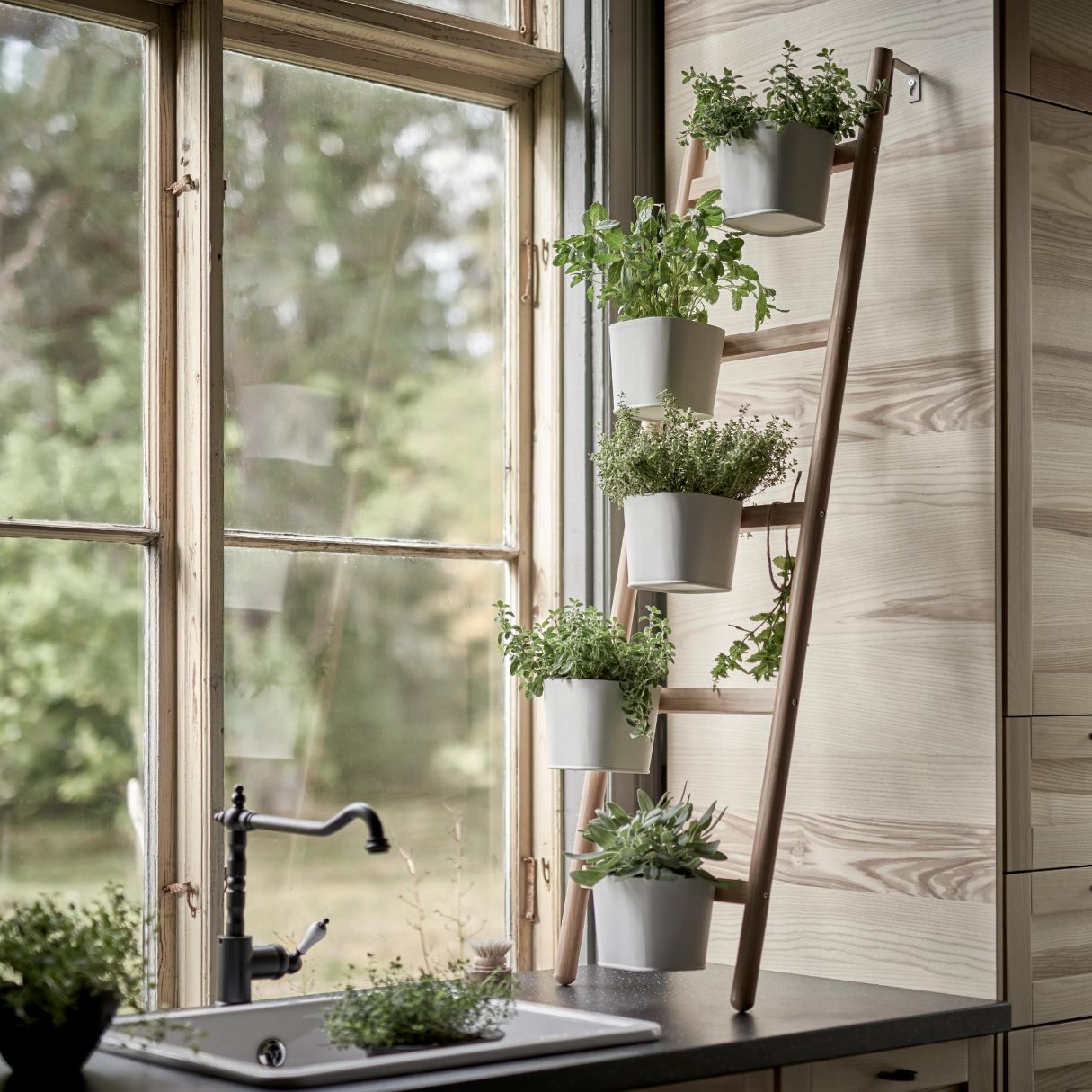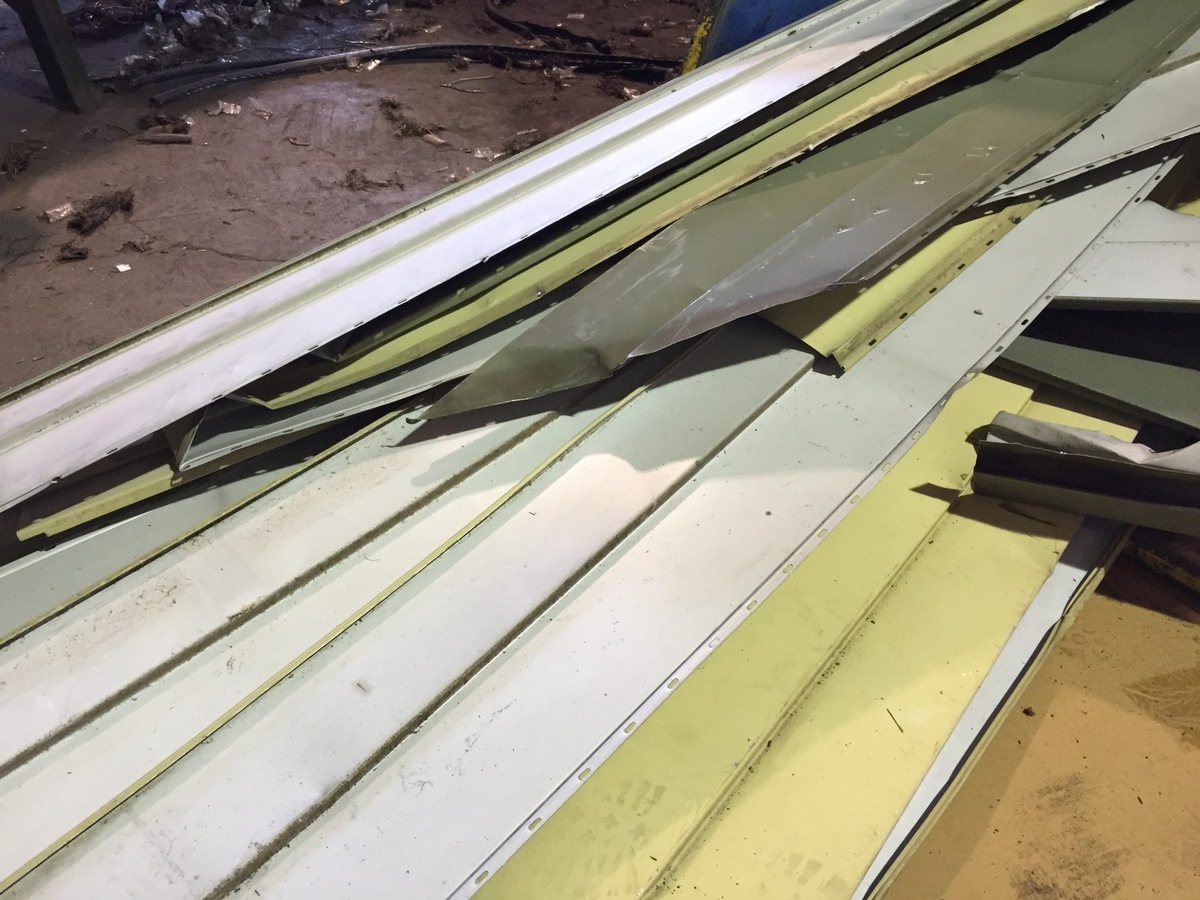

Articles
How To Store Food Scraps For Compost
Modified: September 2, 2024
Learn effective methods for storing food scraps to create nutrient-rich compost. Discover valuable tips and techniques in our informative articles.
(Many of the links in this article redirect to a specific reviewed product. Your purchase of these products through affiliate links helps to generate commission for Storables.com, at no extra cost. Learn more)
Introduction
Composting is a simple and effective way to reduce waste and create nutrient-rich soil for your garden. While many people are familiar with composting yard waste, such as leaves and grass clippings, composting food scraps is equally important. In fact, approximately 30% of household waste is made up of food scraps that could be composted.
Composting food scraps not only helps divert waste from landfills but also contributes to the overall health of your garden. The nutrient-rich compost created from food scraps helps improve soil structure, retain moisture, and provides essential nutrients for plants to thrive. Whether you have a small balcony garden or a large backyard, composting food scraps is a sustainable practice that benefits both the environment and your plants.
In this article, we will explore the various methods of storing food scraps for composting. We will discuss the importance of composting food scraps and provide tips on proper storage and container options for both indoor and outdoor composting. So, let’s dive in and learn how to make the most of our food scraps and turn them into valuable compost for a greener future.
Key Takeaways:
- Composting food scraps reduces waste, enriches soil, and protects the environment. Proper preparation and storage, whether indoors or outdoors, are essential for successful and odor-free composting.
- Balancing carbon-to-nitrogen ratios, maintaining moisture levels, and troubleshooting common issues are key to successful composting. Embrace the joy of transforming food scraps into nutrient-rich “black gold” for a greener future.
Read more: How To Store Wood Scraps
Why Compost Food Scraps?
Composting food scraps is a sustainable practice that offers numerous benefits for both the environment and your garden. Here are some compelling reasons why you should compost your food scraps:
- Reduce Waste: Food scraps make up a significant portion of household waste that typically ends up in landfills. By composting food scraps, you can divert this waste from the landfill and contribute to minimizing the strain on waste management systems.
- Environmental Impact: When food waste decomposes in landfills, it releases methane, a potent greenhouse gas that contributes to climate change. Composting food scraps instead of sending them to the landfill helps reduce methane emissions and combat global warming.
- Nutrient-Rich Soil: Food scraps contain valuable nutrients that can enrich the soil in your garden. Composting these scraps transforms them into nutrient-rich compost, also known as “black gold,” which improves soil fertility, structure, and moisture retention.
- Protects Water Quality: When food scraps decompose in landfills, they can produce leachate, a liquid that can potentially contaminate groundwater and surface water sources. Composting food scraps prevents the release of these harmful substances into the environment, protecting water quality.
- Closes the Food Loop: Composting food scraps allows you to complete the cycle by turning the waste from your kitchen into nutrient-rich compost, which you can then use to grow your own food. It’s a sustainable way to nourish your garden and reduce dependence on chemical fertilizers.
- Reduces Erosion and Watering Needs: Adding compost to your soil improves its structure, making it more resistant to erosion and reducing the need for excessive watering. Composting food scraps ultimately benefits the health of your plants and conserves water.
Composting food scraps is a simple yet impactful step you can take to minimize waste, protect the environment, and nurture your garden. By embracing this sustainable practice, you become an active participant in creating a greener and healthier future.
Preparing Food Scraps for Composting
Before you start composting your food scraps, it’s essential to prepare them properly to ensure a successful and odor-free composting process. Here are some steps to follow when preparing your food scraps:
- Separate and Collect: Set up a separate container or bin in your kitchen specifically for collecting food scraps. This will make it easier to collect and transfer them to your composting area. You can use a small pail, bucket, or even a designated composting bin with a tight-fitting lid to prevent odors and keep pests away.
- Avoid Oil and Animal Products: While most food scraps can be composted, it’s important to avoid adding oils, fats, meat, bones, dairy products, and other animal-based materials. These can attract pests, create odors, and take longer to break down. Stick to vegetable peels, fruit scraps, coffee grounds, tea bags, eggshells, and other plant-based waste.
- Chop or Shred Larger Scraps: To speed up the decomposition process, consider chopping or shredding larger food scraps like melon rinds or corn cobs into smaller pieces. This will increase the surface area, helping them break down more quickly and preventing them from taking up too much space in your composting container.
- Avoid Plastic and Synthetic Materials: Be mindful of removing any plastic wrap, stickers, or synthetic materials from your food scraps before composting. These non-biodegradable items can contaminate the compost and interfere with the decomposition process.
- Balance the Carbon-to-Nitrogen Ratio: Achieving the right balance of carbon-rich (brown) and nitrogen-rich (green) materials is crucial for successful composting. Food scraps are considered nitrogen-rich, so ensure you also add sufficient carbon-rich materials, such as dry leaves, straw, or shredded newspaper, to maintain the ideal composting environment.
By following these steps, you will be well-equipped to prepare your food scraps for composting and ensure a smooth and efficient decomposition process. Remember to regularly empty your kitchen compost bin into your larger composting container or pile to keep it from getting too full or attracting pests.
Storing Food Scraps Properly
Properly storing food scraps is essential for maintaining a clean and odor-free composting process. Here are some tips for storing food scraps effectively:
- Keep Your Composting Container Secure: Whether you’re composting indoors or outdoors, it’s crucial to have a container with a tight-fitting lid. This helps prevent odors and keeps pests, such as flies and rodents, from accessing your food scraps. Look for composting containers specifically designed to seal tightly and deter unwanted visitors.
- Store Food Scraps in a Cool Location: Food scraps can start to decompose and emit odors when exposed to heat. To avoid this, store your composting container in a cool location, such as your kitchen countertop away from direct sunlight or in a shaded area in your backyard. Keeping them cool helps preserve the quality of the scraps and minimizes unpleasant smells.
- Consider Freezing or Refrigerating: If you’re concerned about odors or want to avoid attracting pests, you can store your food scraps in a refrigerator or freezer until you’re ready to compost. Freezing scraps not only helps prevent odors but also slows down the decomposition process, allowing you to accumulate a larger quantity before adding them to your compost pile.
- Use a Compostable Bag or Liner: If you prefer a more convenient option for storing food scraps, consider using compostable bags or liners in your composting container. These bags are made from materials that break down during the composting process and can be added directly to your compost pile. Just make sure the bags are certified compostable and free from plastic or synthetic materials.
- Avoid Wet and Soggy Scraps: Excessive moisture can lead to a smelly and slimy composting mess. To avoid this, try to drain liquid from wet food scraps, such as fruit peels or vegetable scraps, before adding them to your composting container. You can use a colander or squeeze out excess liquid with your hands.
By following these tips, you can ensure that your food scraps are stored properly, minimizing odors, pests, and messes, while maintaining an efficient and successful composting process. Remember, the key is to keep your composting container secure, cool, and free from excess moisture for the best composting results.
Choosing an Indoor Composting Container
Composting indoors is a convenient option for those who have limited outdoor space or live in apartments. To get started with indoor composting, you will need to choose a suitable container. Here are some factors to consider when selecting an indoor composting container:
- Size and Capacity: The size of your indoor composting container will depend on the amount of food waste you generate and the available space in your kitchen. Look for a container with enough capacity to accommodate your typical food scraps without becoming overcrowded.
- Tight-Fitting Lid: A composting container with a tight-fitting lid is essential to prevent odors and keep pests out. Look for a container that seals securely to maintain a clean and odor-free environment in your kitchen.
- Ventilation: Proper airflow is crucial for successful indoor composting. Choose a container with ventilation holes or slots to allow air circulation, which helps prevent the buildup of excess moisture and foul odors.
- Odor Control: Some composting containers come with additional features to control odors, such as carbon filters or charcoal liners. These can help absorb and neutralize odors, making them a good option for those who are particularly sensitive to smells.
- Easy to Clean: Look for a composting container that is easy to clean and maintain. Opt for materials like stainless steel or dishwasher-safe plastic, which are durable and easy to wash between composting cycles.
- Aesthetics: Since the composting container will be visible in your kitchen, consider its aesthetic appeal. Choose a design and color that blends well with your kitchen decor and is visually appealing.
There are various types of indoor composting containers available, including countertop bins, composting crocks, and even electric composters. Consider your specific needs and preferences when making your selection.
If you prefer a DIY option, you can repurpose a lidded bucket or container and add ventilation holes to create your own composting container. Just ensure that it meets the criteria mentioned above for size, ventilation, and odor control.
Remember, regardless of the type of indoor composting container you choose, it’s essential to regularly empty the container into your outdoor compost pile or find an appropriate composting method to complete the decomposition process.
Store food scraps for compost in a sealed container in the kitchen to prevent odors and pests. Empty the container into your outdoor compost bin regularly to keep the process going.
Read more: How To Store Fabric Scraps
Outdoor Composting Options
If you have access to outdoor space, there are several composting options available to transform your food scraps into nutrient-rich compost. Here are some popular outdoor composting methods:
- Compost Pile: The traditional method of composting involves creating a compost pile in your yard. Choose a location that is convenient but away from high foot traffic areas. Start by layering your food scraps with carbon-rich materials, such as dry leaves or straw, to maintain a balanced composting process. Regularly turn the pile to aerate it and speed up decomposition.
- Compost Bin: Using a compost bin is a more organized and contained approach to outdoor composting. There are various types of compost bins available, including plastic bins, wire mesh bins, and wooden bins. Select a bin that suits your space and aesthetic preferences. Remember to layer your food scraps with carbon-rich materials to maintain a healthy balance of nitrogen and carbon in the compost.
- Trench Composting: Trench composting involves digging a trench in your garden bed or designated composting area. Simply bury your food scraps in the trench, cover them with soil, and allow nature to work its magic. Trench composting is a great option for those with limited space or who prefer a more discreet composting method.
- Composting Tumbler: Composting tumblers are rotating bins that make composting more convenient and efficient. These bins allow for easy turning and mixing of the compost, which increases airflow and accelerates the decomposition process. Composting tumblers are particularly beneficial for those with limited time or physical abilities.
- Worm Composting (Vermicomposting): Worm composting involves using composting worms, such as red wigglers, to break down your food scraps. This method is ideal for those with limited outdoor space or who want to compost indoors. Specialized worm bins are available that provide a suitable environment for the worms and make the composting process hassle-free.
When choosing an outdoor composting method, consider factors such as available space, ease of maintenance, and your specific composting goals. Remember to regularly monitor and maintain your compost pile or bin by turning it, adding new layers of food scraps, and ensuring a suitable balance of organic materials.
Each outdoor composting method has its own benefits and considerations, so choose the option that aligns best with your needs and allows you to effectively transform your food scraps into valuable compost for your garden.
Tips for Successful Composting
Composting is a natural process, but a few tips can help ensure that you achieve optimal results. Here are some key tips for successful composting:
- Balance the Carbon-to-Nitrogen Ratio: Maintaining a proper balance between carbon-rich (brown) and nitrogen-rich (green) materials is crucial for successful composting. Aim for a ratio of approximately 3 parts carbon to 1 part nitrogen. Carbon-rich materials include dry leaves, straw, and shredded newspaper, while nitrogen-rich materials include food scraps, grass clippings, and coffee grounds.
- Chop or Shred Large Materials: Breaking down large materials into smaller pieces speeds up the composting process by increasing surface area and enhancing decomposition. Use a sharp gardening tool or a shredder to chop or shred larger items like branches, corn cobs, or fruit peels before adding them to your compost pile.
- Aerate Your Compost: Oxygen is essential for the decomposition process. Regularly turn or aerate your compost pile to introduce oxygen and facilitate the breakdown of organic matter. This can be done using a pitchfork, a compost turning tool, or by using a compost tumbler that allows for easy rotation.
- Maintain Moisture Levels: Composting organisms require moisture to thrive, but excessive moisture can lead to a smelly and slimy compost pile. Aim for a moisture level similar to a wrung-out sponge. If your compost pile becomes too dry, add water; if it becomes too wet, add dry brown materials to absorb the excess moisture.
- Keep Pests Away: To discourage pests from infiltrating your compost pile, avoid adding animal products, oils, or fats. Additionally, cover fresh food scraps with a layer of brown material to mask odors and deter pests. Consider using a compost bin with a secure lid to further prevent pests from accessing your composting materials.
- Patience is Key: Composting is a natural process that takes time. Be patient and allow your compost pile to break down gradually. The decomposition process can take anywhere from a few months to a year, depending on factors such as the materials used, temperature, and the amount of maintenance and turning you provide.
By following these tips, you can maintain a productive and successful composting system. Remember that composting is a continuous process, so keep adding materials, turning your pile, and providing the necessary conditions for decomposition. Before you know it, you’ll have nutrient-rich compost ready to nourish your plants and contribute to a more sustainable lifestyle.
Troubleshooting Common Composting Issues
Composting is a natural process, but sometimes issues can arise that hinder the decomposition process. Here are some common composting issues and tips for troubleshooting them:
- Odors: If your compost pile has a foul smell, it may be too wet or lacking sufficient airflow. Mix in some dry brown materials, like leaves or shredded newspaper, to absorb excess moisture. Turn your compost pile regularly to improve aeration and prevent the formation of anaerobic conditions that cause odor.
- Pests: Unwanted visitors such as flies, rodents, or raccoons may be attracted to your compost pile. Avoid adding meat, dairy, or oily food scraps that can attract pests. Ensure that your composting container or bin has a secure lid to keep pests out. You can also consider adding a layer of wire mesh or hardware cloth at the bottom of your compost pile to deter burrowing animals.
- Slow Decomposition: If your compost pile is taking longer than expected to break down, it may be due to an imbalance in the carbon-to-nitrogen ratio. Adjust the ratio by adding more nitrogen-rich materials (green) if your pile is too carbon-heavy (brown), or add more carbon-rich materials (brown) if your pile is too nitrogen-heavy. Turning the pile more frequently can also speed up decomposition by increasing oxygen flow.
- Excessive Moisture: If your compost pile is too wet and soggy, it can lead to anaerobic conditions and foul odors. Add dry brown materials like leaves, straw, or shredded newspaper to absorb the excess moisture. Ensure proper drainage by placing your compost pile on a well-drained surface or elevating it using pallets or bricks.
- Not Heating Up: A compost pile that fails to heat up may indicate a lack of nitrogen-rich materials or insufficient moisture. Add more nitrogen-rich materials such as grass clippings or fresh plant trimmings to boost the nitrogen content. Sprinkle water onto the pile if it appears dry. Turning the pile can also help stimulate microbial activity and generate heat.
- Weed Seeds and Pathogens: If your compost pile does not reach high temperatures during decomposition, weed seeds or pathogens may survive and potentially spread in your garden. To minimize this risk, avoid adding weeds that have already gone to seed, as well as diseased plant material. Hot composting, which reaches temperatures over 140°F (60°C), can effectively kill weed seeds and pathogens.
By troubleshooting these common composting issues, you can overcome challenges and maintain a healthy and productive composting system. Experiment with different techniques and adjustments to find the optimal conditions for your compost pile. Remember, composting is a learning process, and with time and practice, you will become more adept at producing nutrient-rich compost for your garden.
Conclusion
Composting food scraps is a rewarding and sustainable practice that not only reduces waste but also enriches your garden with nutrient-rich compost. By diverting food scraps from landfills and transforming them into valuable soil amendments, you can contribute to a greener and healthier planet.
In this article, we explored the importance of composting food scraps and learned how to prepare and store them properly. We discussed the options for both indoor and outdoor composting, providing tips on choosing the right container and troubleshooting common issues that might arise during the composting process.
Remember, composting is a natural process that requires patience and experimentation. By balancing the carbon-to-nitrogen ratio, maintaining proper moisture levels, and providing adequate airflow, you can create an ideal environment for decomposition. Regularly turning your compost pile and adding a mix of brown and green materials will help speed up the process and produce nutrient-rich compost more efficiently.
Whether you choose to compost indoors using a countertop bin or venture into outdoor composting with a traditional pile or compost bin, each method has its own benefits and considerations. Find the composting method that suits your lifestyle, available space, and composting goals.
Embrace the joy of composting and witness the transformation of your food scraps into “black gold” for your garden. By incorporating compost into your soil, you will enhance its fertility, improve its water-holding capacity, and promote the growth of healthy and vibrant plants.
Composting is a small but impactful step towards a more sustainable future. Start composting your food scraps today and join the movement towards reducing waste, nourishing the soil, and creating a healthier environment for generations to come.
Frequently Asked Questions about How To Store Food Scraps For Compost
Was this page helpful?
At Storables.com, we guarantee accurate and reliable information. Our content, validated by Expert Board Contributors, is crafted following stringent Editorial Policies. We're committed to providing you with well-researched, expert-backed insights for all your informational needs.















0 thoughts on “How To Store Food Scraps For Compost”